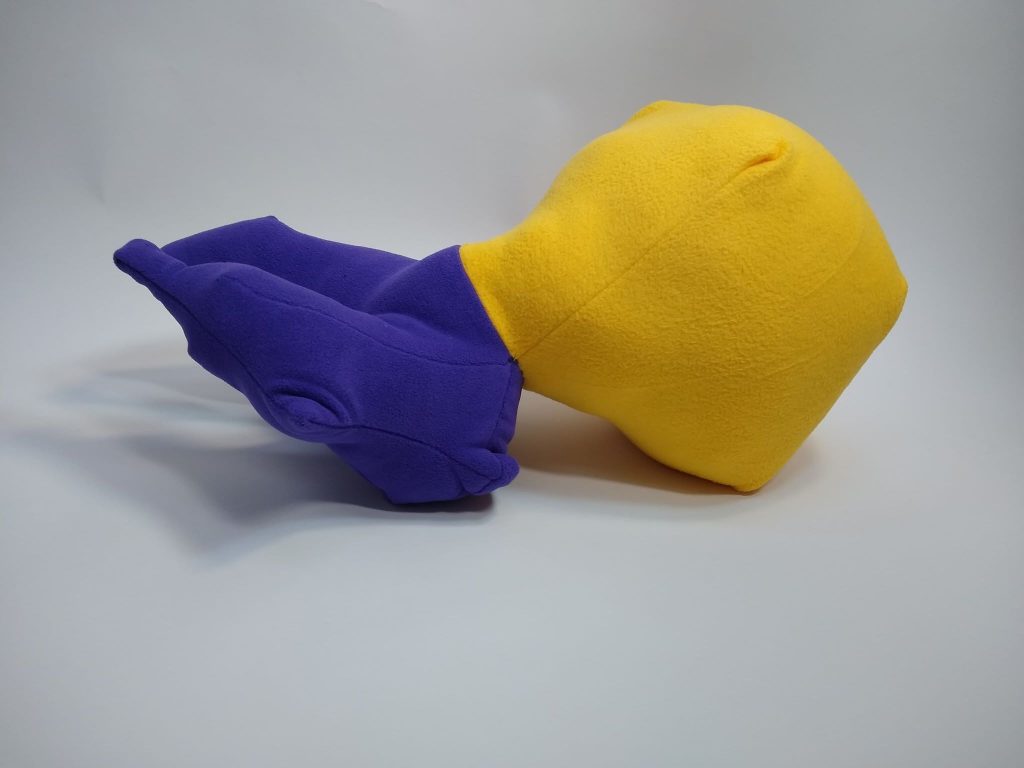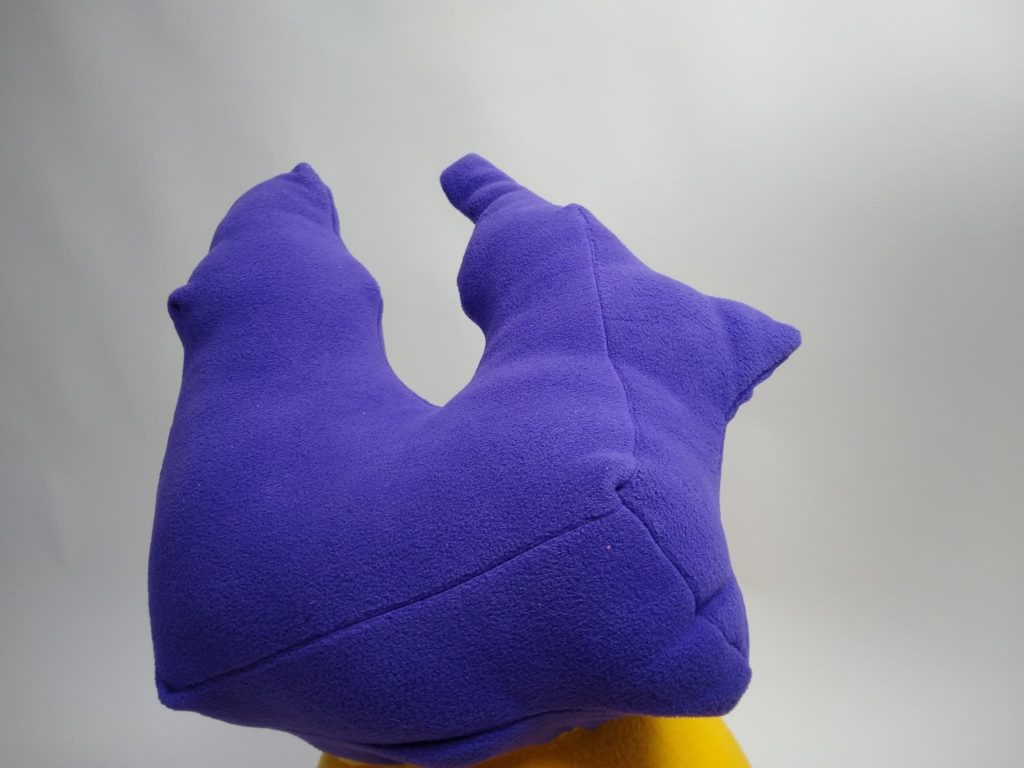Push/Pull 1 – Josh Durham
Since this was my first time working with a sewing machine, I wanted to focus on building fundamental sewing skills and learning how to think through the design of structures made from textiles. I mainly focused on manipulations via combination of different primary forms while utilizing additional stitches to modify and add tension to shapes internally, all while keeping a clean exterior to the forms. I also utilized bright and contrasting colors in order to keep the forms simple yet bold and interesting.
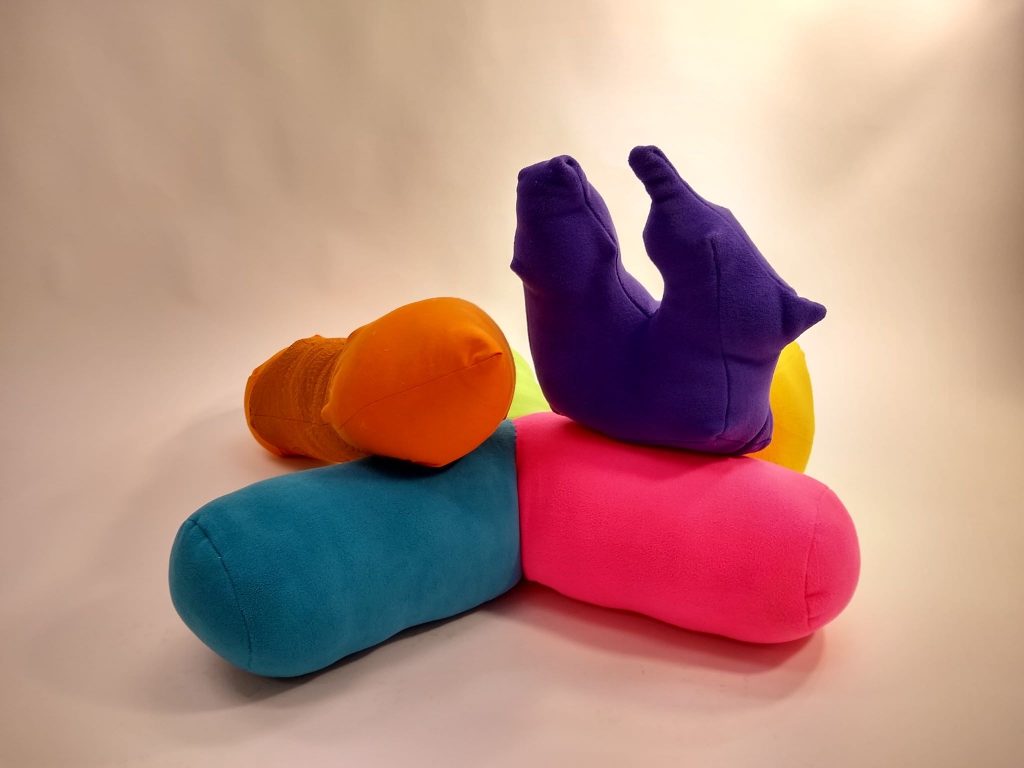
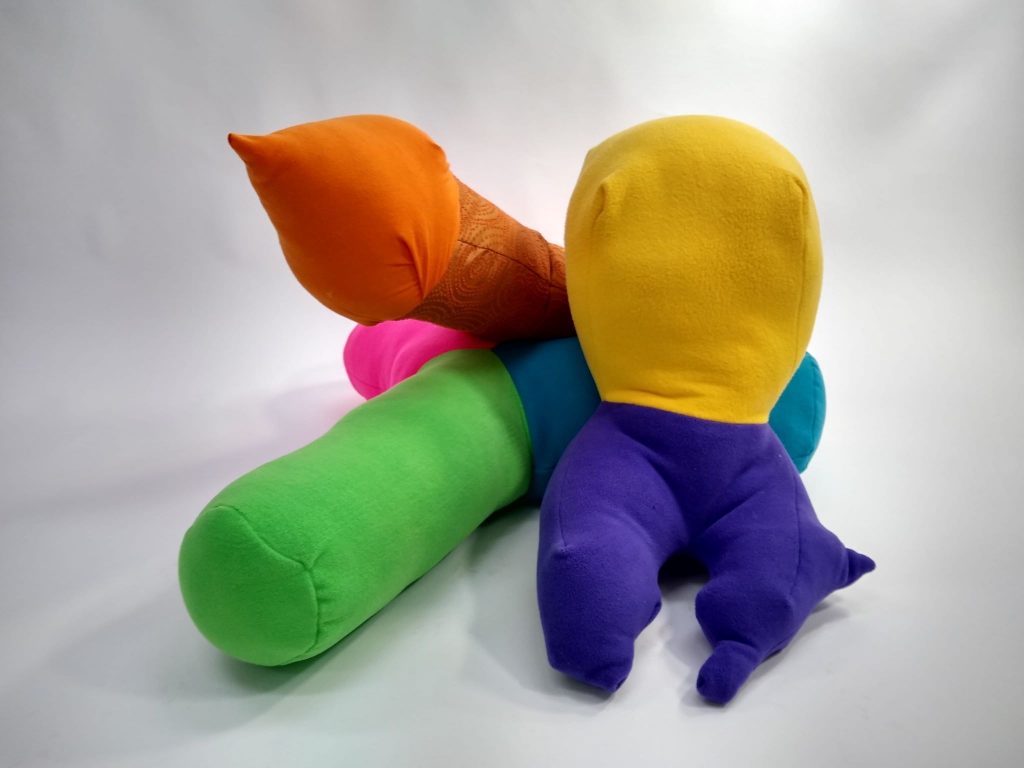
Three Cylinders
The first object began as an exploration into how we can combine and intersect primary forms to create tense and interesting new shapes. I created 3 brightly colored fleece cylinders and joined the three cylinders at a single point in order to create a radially symmetric shape. In order to make sure that the 3 cylinders cleanly meet at a single point, I had to hand sew a large portion of the seams near the center of the shape in order to make sure that all of the threads are cleanly hidden. I also tried to add as much filling as possible to the shape, since the thickness and pressure of the form gives it a much more rigid appearance and makes it more enjoyable to interact with. I enjoy the bold color palette for this piece as well as its size that makes it heavy and somewhat cumbersome to interact with.

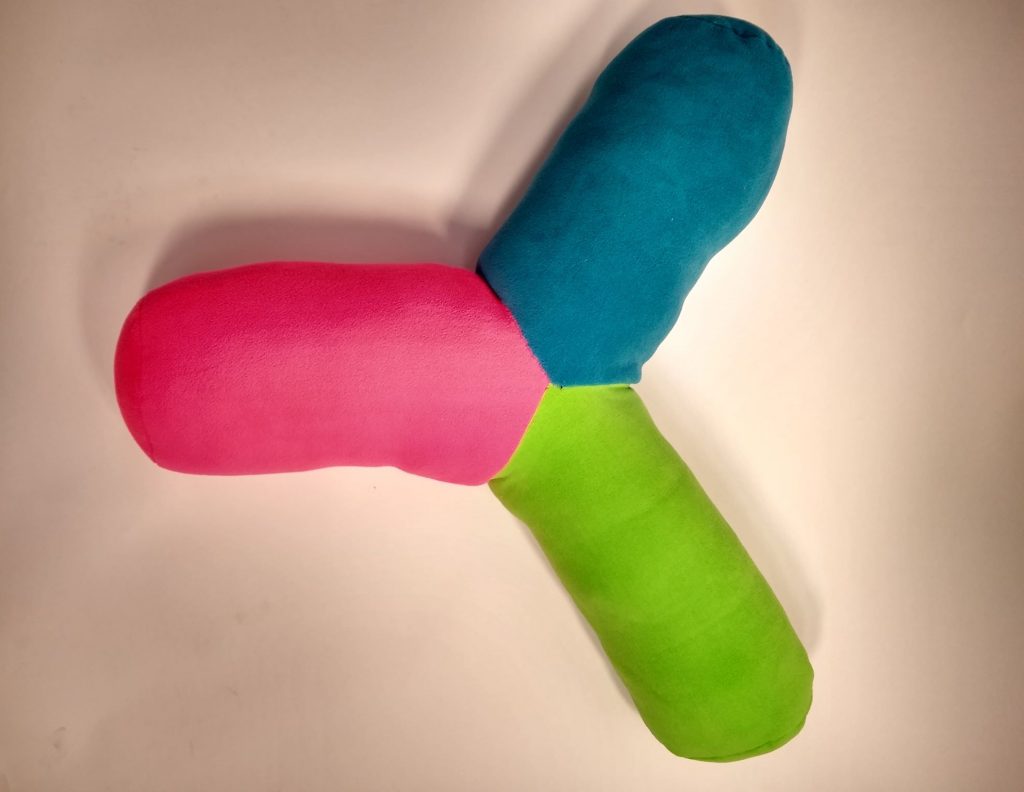
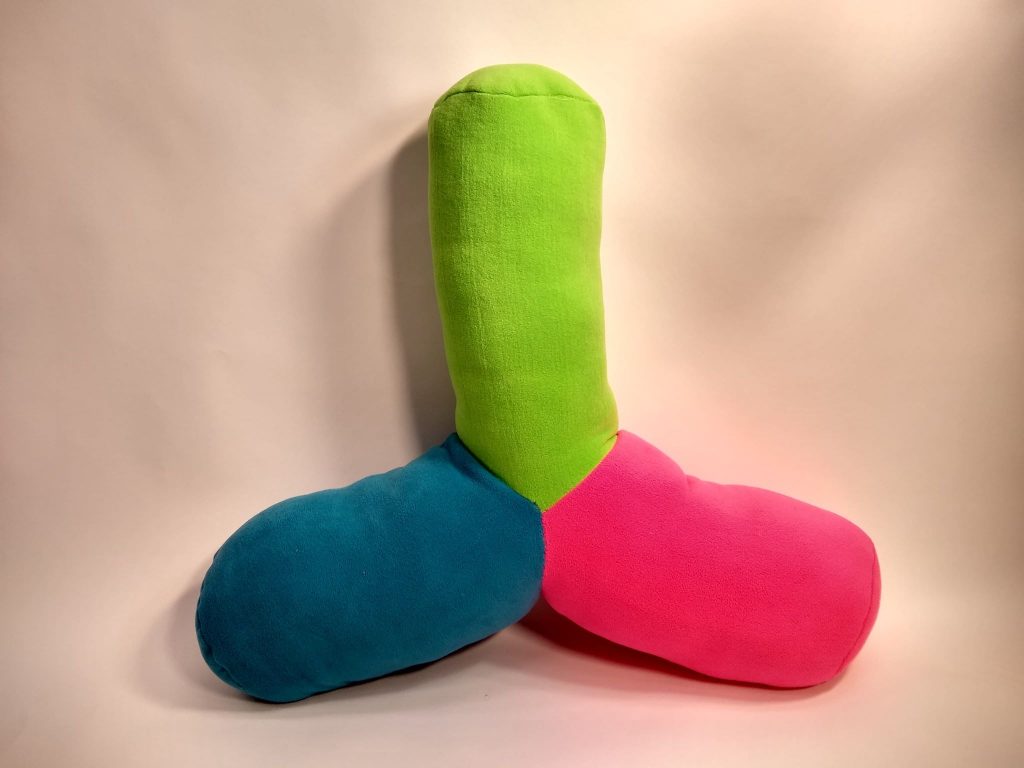
Two Cones and One Cylinder
This next shape was mainly designed around the cylinder with the circular embroidery pattern. I was initially drawn to this fabric since I found it to be somewhat ugly, and I wanted to create a piece that could be used as a throw pillow or a piece of upholstery yet seemed unattractive at the same time. The general form is a combination of a large cylinder with one cone on each end. The cylinder has four seams added to it to modify its shape along the long axis. Two seams make the cylinder tighter towards the ends connected to the cones while two opposing seams make the cylinder have a tighter radius in the middle of the shape. The two cones are then attached at each end, and pleats are added to give the shape more volume.

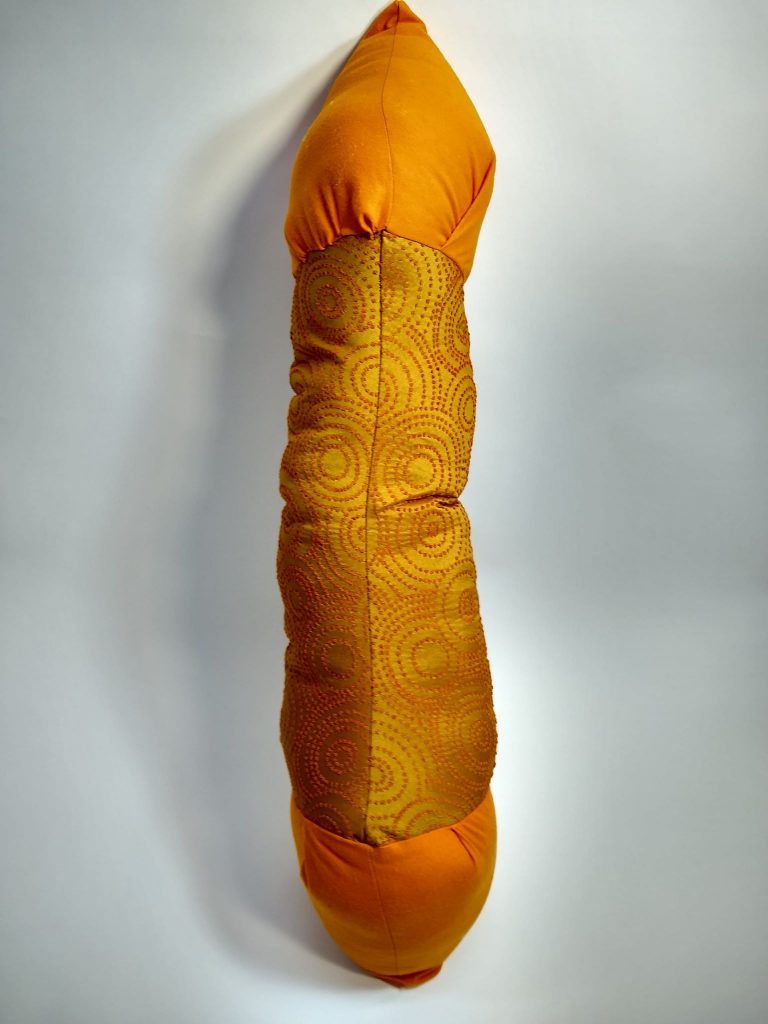
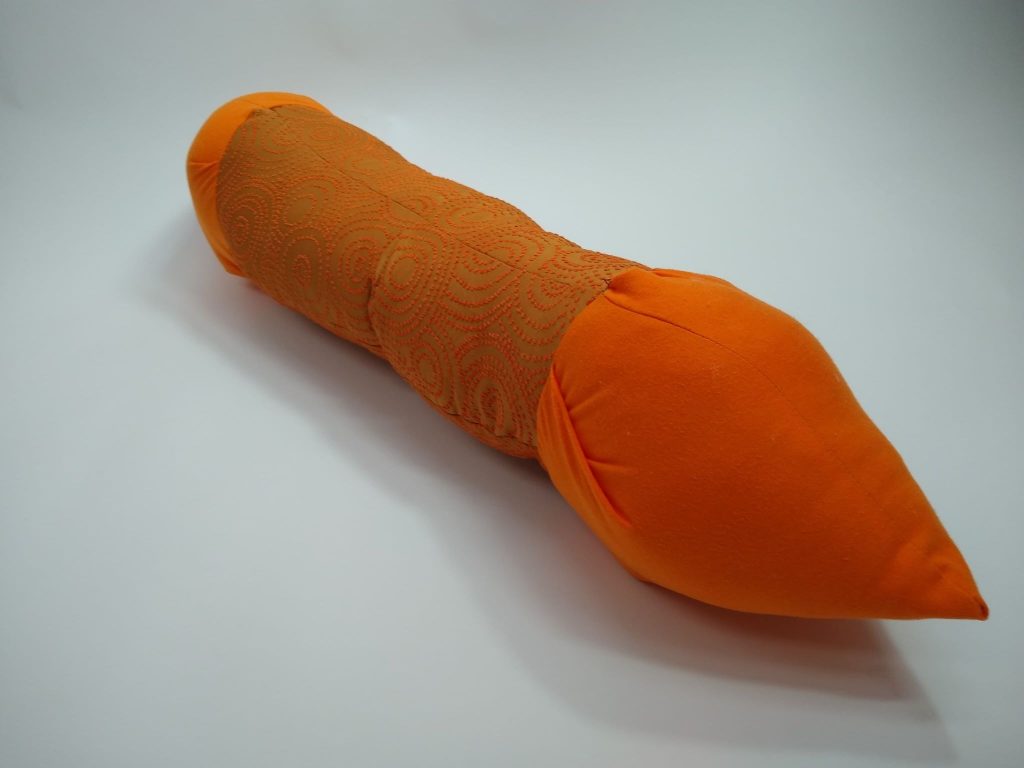
Two Cubes
This final shape initially started again as the union of two primary forms to create a new interesting shape. This form initially began as two cubes joined at a single edge. I then took one of the two cube pieces, folded it in half, and stitched random shapes along the fold line while being careful to not stitch over any of the seam lines for the shape. This allowed for the volume to have a new, interesting shape while still being able to be assembled like a cube. The random shapes stitched into the purple cube resulted in a very organic and interesting form that isn’t easily replicated by combining primary forms on their own. This technique of creating new forms by stitching constraining seams into the interior of shapes while still keeping the seam lines the same is one of my favorite modifications since it creates very interesting forms while keeping the overall assembly process relatively simple. I also greatly enjoy the contrast in this piece where we have a simple yellow cube juxtaposed by a malformed and bizarre looking purple cube.

